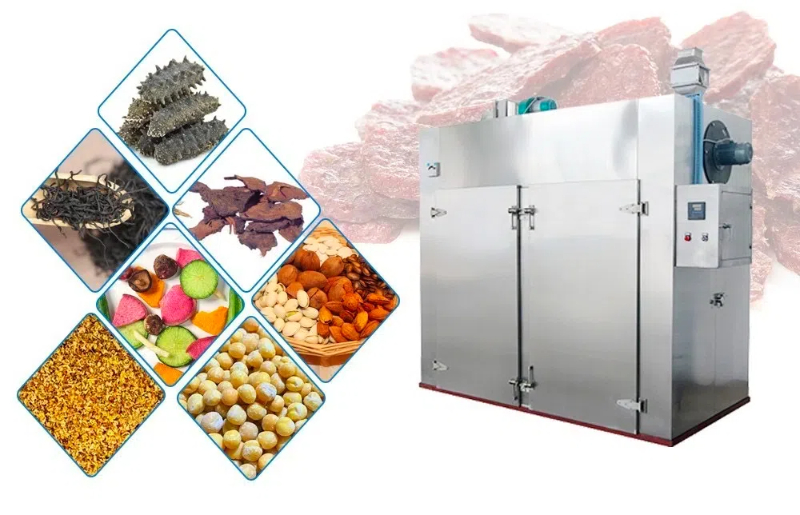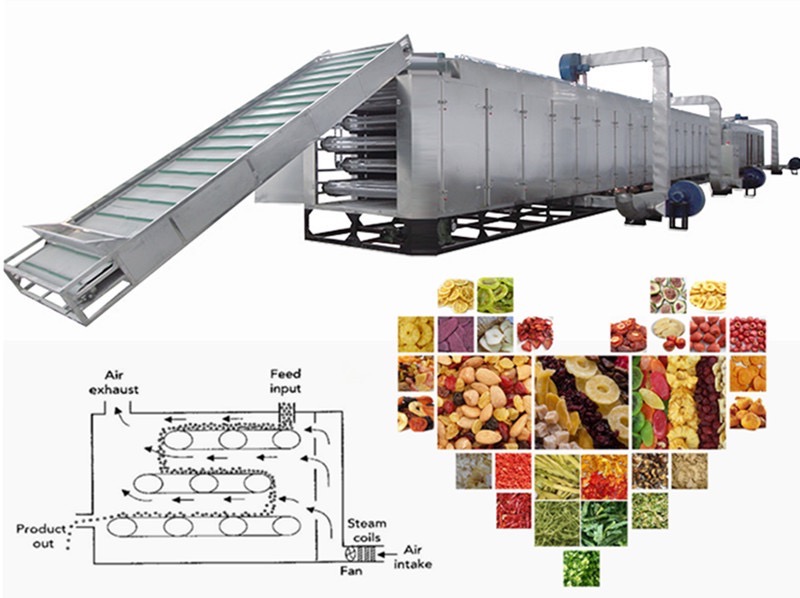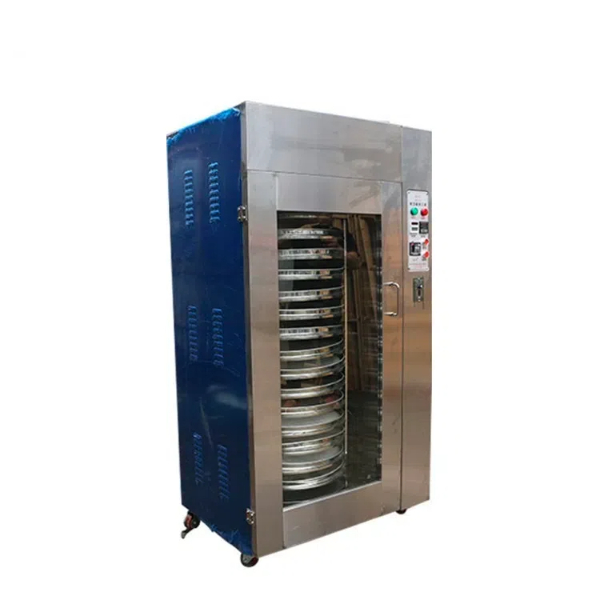
Content Menu
● Introduction to Food Dehydration
● Understanding Food Dehydrator Machines
>> Types of Food Dehydrator Machines
● Benefits of Using a Machine to Dry Food
>> Nutritional Benefits
● How to Choose the Right Food Dehydrator Machine
● Popular Foods to Dry in a Dehydrator Machine
>> Creating Healthy Snacks
● The Dehydration Process: Step by Step
● Maintenance and Care of Your Food Dehydrator Machine
● Advanced Techniques and Recipes
>> Innovative Uses for Dried Foods
● The Future of Food Dehydration Technology
● Conclusion: Embracing the Benefits of Food Dehydrator Machines
● Frequently Asked Questions
>> 1. Q: How long does it take to dehydrate food in a machine?
>> 2. Q: Can I dehydrate different foods together in the same machine?
>> 3. Q: How long do dehydrated foods last?
>> 4. Q: Is it safe to dehydrate meats at home?
>> 5. Q: Can I use a food dehydrator machine to make pet treats?
Introduction to Food Dehydration
Food dehydration is an ancient preservation technique that has evolved with modern technology. Today, we have efficient machines to dry food, making it easier than ever to preserve fruits, vegetables, meats, and herbs. These food dehydrator machines have become increasingly popular among health-conscious individuals, outdoor enthusiasts, and those looking to reduce food waste.
Understanding Food Dehydrator Machines
A food dehydrator machine is a device designed to remove moisture from food items, extending their shelf life while preserving nutrients and flavors. These machines work by circulating warm air around the food, slowly evaporating the water content. The process is gentle enough to maintain the food's nutritional value and natural taste, making it an excellent alternative to other preservation methods.
Types of Food Dehydrator Machines
There are several types of food dehydrator machines available in the market:
1. Stackable Tray Dehydrators
2. Shelf Tray Dehydrators
3. Commercial Grade Dehydrators
4. Solar Dehydrators
Each type has its advantages, depending on the user's needs and the volume of food to be dried.
Benefits of Using a Machine to Dry Food
Using a machine to dry food offers numerous benefits:
1. Preservation of nutrients and enzymes
2. Extended shelf life of foods
3. Reduction of food waste
4. Cost-effective in the long run
5. Versatility in food preparation
6. Compact storage of dried foods
7. Retention of natural flavors
Nutritional Benefits
When using a food dehydrator machine, the low temperatures used in the drying process help preserve essential vitamins and minerals. Unlike high-heat cooking methods, dehydration retains most of the food's nutritional value, making it an excellent choice for health-conscious individuals.

How to Choose the Right Food Dehydrator Machine
Selecting the perfect food dehydrator machine depends on several factors:
1. Capacity: Consider how much food you plan to dry at once.
2. Temperature Control: Look for machines with adjustable temperature settings.
3. Fan and Air Flow: Ensure even drying with proper air circulation.
4. Noise Level: Some machines can be noisy, so consider this if it's a concern.
5. Ease of Cleaning: Removable trays and dishwasher-safe components are a plus.
6. Energy Efficiency: Look for models with energy-saving features.
7. Additional Features: Timer, automatic shut-off, and transparent doors can be helpful.
Popular Foods to Dry in a Dehydrator Machine
Food dehydrator machines are incredibly versatile. Here are some popular items you can dry:
1. Fruits: Apples, bananas, berries, mangoes, and pineapples
2. Vegetables: Tomatoes, carrots, peppers, and zucchini
3. Herbs: Basil, oregano, thyme, and parsley
4. Meats: Beef jerky, turkey jerky, and fish
5. Nuts and Seeds: Almonds, pumpkin seeds, and sunflower seeds
6. Flowers: Edible flowers for teas or decorations
Creating Healthy Snacks
One of the most popular uses for a food dehydrator machine is creating healthy, preservative-free snacks. Dried fruit chips, vegetable crisps, and homemade trail mixes are just a few examples of the nutritious treats you can make.
The Dehydration Process: Step by Step
Using a machine to dry food is a straightforward process:
1. Prepare the food: Wash, peel (if necessary), and slice the items evenly.
2. Pretreat if needed: Some fruits benefit from a quick lemon juice bath to prevent browning.
3. Arrange on trays: Place food items in a single layer, not touching each other.
4. Set temperature and time: Follow guidelines for specific foods.
5. Start the machine: Allow the dehydrator to run for the recommended time.
6. Check for doneness: Foods should be dry and leathery but not brittle.
7. Cool and store: Allow dried foods to cool before storing in airtight containers.

Maintenance and Care of Your Food Dehydrator Machine
To ensure your food dehydrator machine lasts for years, proper maintenance is crucial:
1. Clean after each use: Wash trays and any removable parts with warm, soapy water.
2. Check filters: If your machine has filters, clean or replace them regularly.
3. Inspect heating elements: Ensure they're functioning correctly and free from debris.
4. Store properly: Keep the machine in a clean, dry place when not in use.
5. Follow manufacturer's instructions: Adhere to specific care guidelines for your model.
Advanced Techniques and Recipes
Once you're comfortable with basic dehydration, you can explore advanced techniques:
1. Making fruit leathers
2. Creating powders from dried vegetables
3. Dehydrating complete meals for camping or emergency preparedness
4. Crafting dried herb blends and seasoning mixes
5. Experimenting with marinated and seasoned jerky recipes
Innovative Uses for Dried Foods
Dried foods can be incorporated into various culinary creations:
1. Add to baked goods for extra flavor and nutrition
2. Use as toppings for yogurt, oatmeal, or ice cream
3. Incorporate into homemade granola or energy bars
4. Rehydrate for use in soups, stews, and sauces
5. Create unique spice blends with dried herbs and vegetables
The Future of Food Dehydration Technology
As technology advances, we can expect to see improvements in food dehydrator machines:
1. Smart features with mobile app integration
2. More energy-efficient models
3. Faster drying times with improved air circulation
4. Enhanced temperature and humidity control
5. Integration with other kitchen appliances
Conclusion: Embracing the Benefits of Food Dehydrator Machines
Food dehydrator machines offer a fantastic way to preserve food, create healthy snacks, and explore new culinary possibilities. By understanding how to choose and use these machines effectively, you can enjoy the benefits of dried foods while reducing waste and saving money. Whether you're a health enthusiast, a busy parent, or an outdoor adventurer, a food dehydrator machine can be a valuable addition to your kitchen arsenal.

Frequently Asked Questions
1. Q: How long does it take to dehydrate food in a machine?
A: The drying time varies depending on the food type, thickness of slices, and moisture content. Fruits can take 6-16 hours, vegetables 4-10 hours, and meats 4-12 hours for jerky.
2. Q: Can I dehydrate different foods together in the same machine?
A: It's best to dehydrate foods with similar drying times and flavors together. Strong-smelling foods should be dried separately to avoid flavor transfer.
3. Q: How long do dehydrated foods last?
A: Properly dried and stored foods can last from 6 months to a year. Some items, like dried herbs, can last even longer when stored in airtight containers in a cool, dark place.
4. Q: Is it safe to dehydrate meats at home?
A: Yes, it's safe to dehydrate meats at home, but it's crucial to follow proper food safety guidelines. Meats should be heated to 165°F (74°C) before dehydrating to kill any harmful bacteria.
5. Q: Can I use a food dehydrator machine to make pet treats?
A: Absolutely! Many pet owners use food dehydrators to make healthy, preservative-free treats for their pets. Popular options include dehydrated sweet potato slices, chicken strips, and fruit chips.











